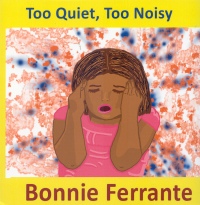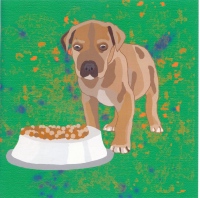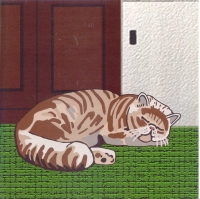| ________________
CM . . .
. Volume XX Number 35. . . .May 9, 2014
excerpt:
As the except above reveals, Lily experiences two quite different environments: a world of quiet serenity in her grandparents’ home and a world of noisy action in the residence she shares with her parents, brother and pet dog. Ferrante’s text repeats the quiet/noisy pattern three times, with each using different examples, before Lily’s grandmother and her mother each become aware of Lily’s response to the setting in which she finds herself. Nana observes Lily falling asleep on the couch in the daytime while her mother sees Lily covering up her ears with her hands. When Lily explains to Nana that she fell asleep because “It’s just so quiet” and tells her mother that her action of covering her ears was because “It’s just so noisy” in their house, both women respond with the same words: “I didn’t notice”. Because neither adult apparently recognizes that there is any problem requiring solving, Lily creates her own personal solution. On her next visit to Nana’s house, Lily suggests that they make music by strumming an elastic band, slapping a pot and tapping on a glass. In her own home, Lily invites her father to help her put a jigsaw puzzle together. Now, both residences have quiet and noisy times. The story concludes with:
My second criticism concerns the full-page illustrations that are quite uneven in quality and/or their connection with the text. Some of them, such as the whining dog (p. 8) or the sleeping cat (p. 10), are quite stunning and represent the words of the text quite well, but others, such as that found on p. 6 or p. 14, simply do not connect with the text. Perhaps it is easier to illustrate noise than silence. Overall, however, Ferrante’s presentation of the idea that life is about achieving balance is effective. Her use of upper case letters for the words in the NOISY portions signals readers to raise their voices when they read these sections, and Ferrante carries this visual cue into the later parts of the story in which Lily introduces some NOISE into her grandparents’ home. Additionally, the appearance of lower case sounds in Lily’s home reveals the introduction of quieter activities into that environment. Although not mentioned in the book, Ferrante does have a website (http://my.tbaytel.net/bonnieheather/index.htm). There, clicking on “Bonnie Ferrante’s Writing” leads to a cover image of Too Quiet, Too Noisy. In turn, clicking on the cover brings up more than two dozen “Too Quiet, Too Noisy Discussion Questions”. Recommended. Dave Jenkinson, CM’s editor, lives in Winnipeg, MB.
To comment
on this title or this review, send mail to cm@umanitoba.ca.
Copyright © the Manitoba Library Association. Reproduction for personal
use is permitted only if this copyright notice is maintained. Any
other reproduction is prohibited without permission.
NEXT REVIEW |
TABLE OF CONTENTS FOR THIS ISSUE
- May 9, 2014.
AUTHORS |
TITLES |
MEDIA REVIEWS |
PROFILES |
BACK ISSUES |
SEARCH |
CMARCHIVE |
HOME |

 Design-wise, Ferrante uses the left page of each pair of facing pages to carry the text, with the right hand page then containing a full-page illustration that reveals the quiet or noisy activities identified by the text. For the first three-quarters of the book, the top half of the text page also carries an illustration that shows how Lily is feeling in the setting in which she finds herself. In the book’s last quarter, this illustration is connected to the quiet or noisy activity that Lily has introduced into her grandparents’ house or her own home.
Design-wise, Ferrante uses the left page of each pair of facing pages to carry the text, with the right hand page then containing a full-page illustration that reveals the quiet or noisy activities identified by the text. For the first three-quarters of the book, the top half of the text page also carries an illustration that shows how Lily is feeling in the setting in which she finds herself. In the book’s last quarter, this illustration is connected to the quiet or noisy activity that Lily has introduced into her grandparents’ house or her own home. For me, Too Quiet, Too Noisy had two weaknesses. Firstly, the lines “Lily felt sleepy” and “Lily felt bothered” are repeated a number of times, and I fully understand what it means to feel sleepy, but I (and I suspect the book’s young listeners/readers as well) do not really understand what it means to be “bothered”. To be fair, Ferrante does provide some visual hints as to what that/those emotion(s) might be via her illustrations of Lily that appear above the text. Nonetheless, I do wish that Ferrante had found a better word than “bothered”.
For me, Too Quiet, Too Noisy had two weaknesses. Firstly, the lines “Lily felt sleepy” and “Lily felt bothered” are repeated a number of times, and I fully understand what it means to feel sleepy, but I (and I suspect the book’s young listeners/readers as well) do not really understand what it means to be “bothered”. To be fair, Ferrante does provide some visual hints as to what that/those emotion(s) might be via her illustrations of Lily that appear above the text. Nonetheless, I do wish that Ferrante had found a better word than “bothered”.